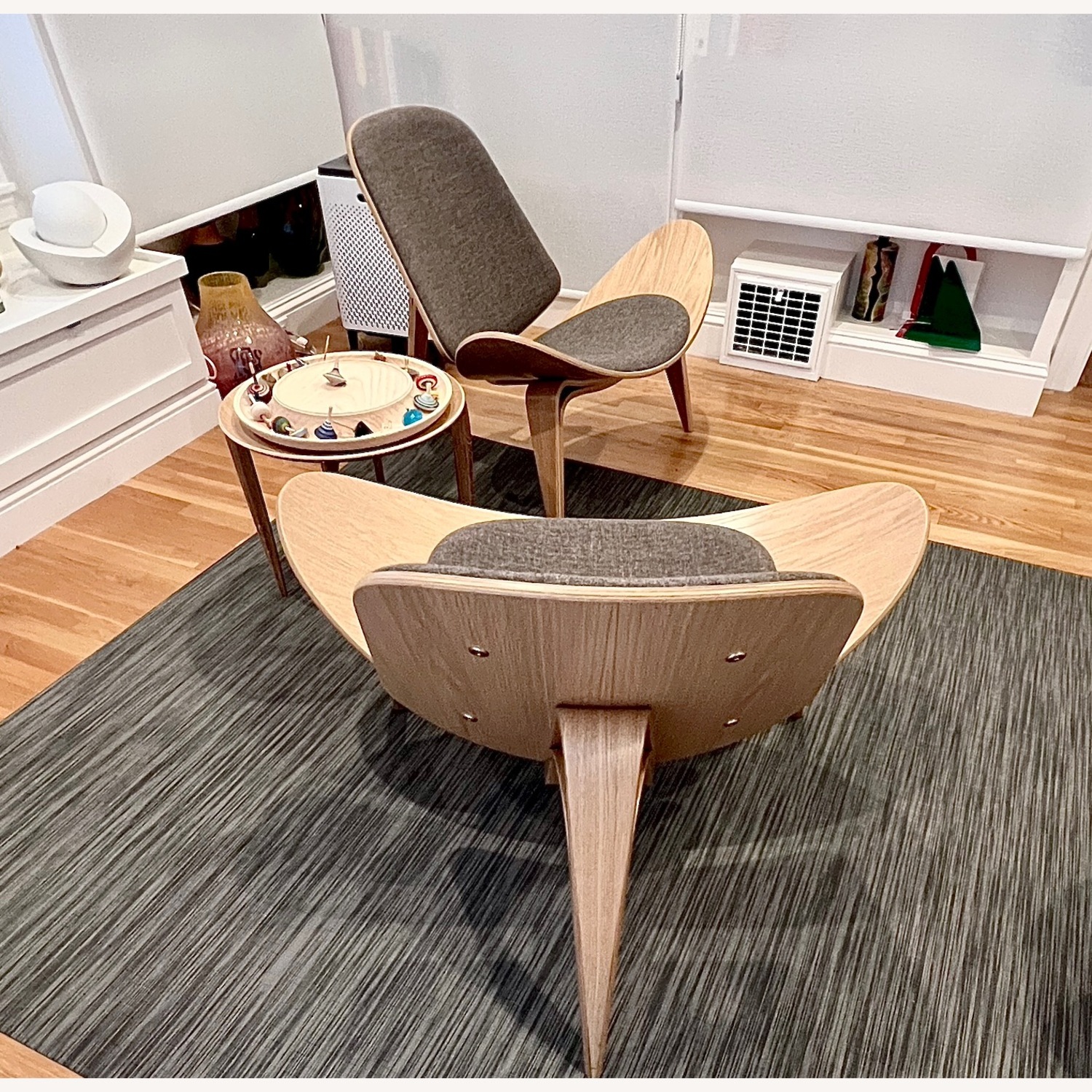Hans J. Wegner, often called the “Master of the Chair,” left an indelible mark on the world of furniture design. His creations, born from a deep understanding of form and function, continue to captivate design enthusiasts. This article delves into Wegner’s life, explores his iconic chair designs, and reveals the secrets behind their enduring appeal.
The Craftsmanship of Wegner’s Creations
Wegner’s dedication to his craft is evident in the over 500 chairs he designed throughout his career. Each piece, a testament to his mastery, embodies the principles of Danish Modernism: clean lines, practicality, and a celebration of natural materials, particularly wood. He wasn’t simply designing furniture; he was shaping a legacy.
His iconic Wishbone Chair, with its signature Y-shaped back and woven seat, has become a timeless classic. The futuristic Shell Chair, balanced on three sculptural legs, demonstrates Wegner’s willingness to experiment with form and materials. Wondering about the latest bathroom decor? Discover the suitable hanging lamp bathroom design for your home!
But Wegner’s designs are more than just visually appealing. He prioritized “organic functionality,” ensuring that his chairs were as comfortable as they were beautiful. By understanding the human form, he created pieces that offered exceptional support and encouraged relaxed posture. His commitment to quality extended to every detail, from the meticulous joinery to the careful selection of materials. These chairs were built to last, a testament to his dedication to craftsmanship.
Wegner’s Legacy of Sustainable Design
Wegner was also ahead of his time in his commitment to sustainability. His preference for natural materials like wood and leather aligns with modern environmental consciousness. Owning a Wegner chair isn’t just an aesthetic choice; it’s a responsible one. It’s a connection to the golden age of Danish Modernism and an investment in a piece built to last for generations. Looking for an ergonomic office chair? Check out the Herman Miller Celle chair today!
These chairs are highly sought-after collector’s items, often fetching impressive prices at auction. Their value lies not only in their design but also in their historical significance. They represent a tangible link to a pivotal era in design history, an era that continues to influence contemporary furniture.
Ensuring Authenticity: A Guide to Wegner Chairs
When considering a Wegner chair, authenticity is paramount. The market is rife with replicas, so careful examination is essential. Genuine Wegner chairs typically bear the manufacturer’s logo (often Carl Hansen & Søn) and sometimes even Wegner’s signature. Other key indicators of authenticity include the quality of materials, the precision of the joinery, and the chair’s overall design consistency. Factors such as the chair’s condition, provenance (especially for older chairs), and rarity can also impact its value.
Beyond the iconic Wishbone and Shell Chairs, exploring Wegner’s lesser-known designs like the Valet Chair and the Papa Bear Chair reveals the breadth of his creativity. Examining his sketches and prototypes offers a fascinating glimpse into his design process, revealing the evolution of his ideas and his meticulous attention to detail.
Hans Wegner: Defining Danish Modern Design
What is Hans J. Wegner truly known for? His legacy extends far beyond simply designing chairs. He’s recognized as a pivotal figure in the mid-century modern movement, instrumental in popularizing Danish Modern design globally, particularly in the United States. He demonstrated that everyday objects could be elevated to works of art.
Wegner’s influence is perhaps most visible in his iconic chair designs. The Wishbone Chair, continuously produced since 1950, exemplifies his minimalist yet elegant aesthetic. The Round Chair, famously used in the first televised Kennedy-Nixon presidential debate, embodies understated sophistication. The Flag Halyard Chair, with its sculptural form, reflects Wegner’s artistic sensibilities.
His inspiration stemmed from diverse sources, from the graceful lines of Ming Dynasty chairs to the intricacies of traditional joinery. By blending historical influences with a modern vision, he created pieces that felt both familiar and innovative. Ongoing research continues to illuminate the nuances of his creative process, suggesting that our understanding of his genius is still evolving.
Deconstructing the Wishbone Chair’s Enduring Allure
Why has the Wishbone Chair, designed in 1949, remained so popular? Its enduring appeal likely lies in a combination of comfort, craftsmanship, and timeless design. The steam-bent frame, crafted from beech or oak, provides exceptional support, particularly for the lower back. The hand-woven paper cord seat offers flexibility and conforms to the body. The continuous armrest and backrest create a sense of seamless integration, promoting relaxation.
Each Wishbone Chair is meticulously handcrafted using traditional techniques, ensuring both durability and a unique tactile quality. Its simple elegance transcends fleeting trends, allowing it to complement a wide range of interior styles. The chair’s versatility makes it suitable for dining rooms, living rooms, and even offices.
Beyond its functional attributes, the Wishbone Chair holds cultural significance. It symbolizes Danish modernism’s emphasis on functional beauty and enduring design. It’s a conversation piece, a piece of furniture that tells a story of design heritage. While personal preferences vary, the Wishbone Chair’s combination of comfort, craftsmanship, and timeless appeal continues to resonate with design enthusiasts worldwide. Some research even suggests its ongoing popularity could be linked to its perceived status as a symbol of good taste and quality.
- How to Remove Water Stains from Fabric: A Complete Guide - April 26, 2025
- How to Get Motor Oil Out of Clothes: Proven Methods & Expert Tips - April 26, 2025
- How to Get Deodorant Out of Black Shirts: Easy Stain Removal Guide - April 26, 2025










